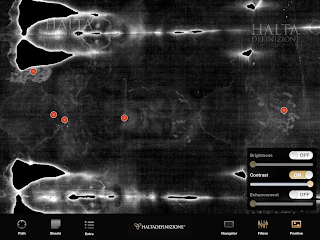They paved Plantagenet and put up a parking lot.
 |
| Richard III of England, in better days |
I, that am rudely stamp'd, and want love's majesty
To strut before a wanton ambling nymph;
I, that am curtail'd of this fair proportion,
Cheated of feature by dissembling nature,
Deformed, unfinish'd, sent before my time
Into this breathing world, scarce half made up,
And that so lamely and unfashionable
That dogs bark at me as I halt by them;
Why, I, in this weak piping time of peace,
Have no delight to pass away the time,
Unless to spy my shadow in the sun
And descant on mine own deformity:
And therefore, since I cannot prove a lover,
To entertain these fair well-spoken days,
I am determined to prove a villain
And hate the idle pleasures of these days.
-- Richard III
Act I, Scene 1, by William Shakespeare
The realms of history and archaeology are run amok with chatter this day with the news that the remains of King Richard III, the last of the Plantagenet monarchs, have been positively identified. The bones were discovered last year beneath, of all places, a parking lot in Leicester.
(Does this renew hope that Jimmy Hoffa will yet be found, or what?)
Richard III ruled England from 1483 to 1485... and what wild years they were! It was the War of the Roses between the houses of York and Lancaster. And then that upstart Henry Tudor crashed the party. Richard III and his army fought the Tudor boys at the Battle of Bosworth Field on August 22, 1485. It did not go well: Henry Tudor won the day (before going on to become King Henry VII) and Richard III was killed in manner most foul!
So history tells us that afterward some Franciscan monks took poor Richard's body to their church in Leicester and buried him there. And then decades later in 1538 that bastitch Henry VIII was hellbent on destroying many churches and monasteries throughout his lands. The site of the church - and Richard III's resting place - wound up neglected and ultimately forgotten. It might have remained so, were it not for a group of researchers from the University of Leicester who last year, working through "map regression" of recent geography back through to the Middle Ages, rediscovered the site. In the process they came across this skeleton...
Regardless of the nasty propaganda that the Tudors disseminated about him (and which Shakespeare unwittingly helped to perpetuate) it can't be denied: Richard III had a
severe case of scoliosis.
Anyhoo, it's really him! The wounds found on the skull correspond with reports of those Richard received at Bosworth Field. And analysis of mitochondrial DNA from the bones and those of Michael Ibsen - a descendant of Richard's sister, Anne of York - have confirmed it.
And where has Richard III been for many of the past 528 years? Buried beneath a modern parking lot in Leicester.
It's been announced that Richard III will be re-buried - this time with a coffin and proper honors - at Leicester Cathedral. But I'm certainly not alone in the desire that some day Richard III will be given the resting place due him in Westminster Abbey.
Wheverever it is he winds up now, it's awesome news that Richard III has been found at last. The king is dead. Long live the king!



















